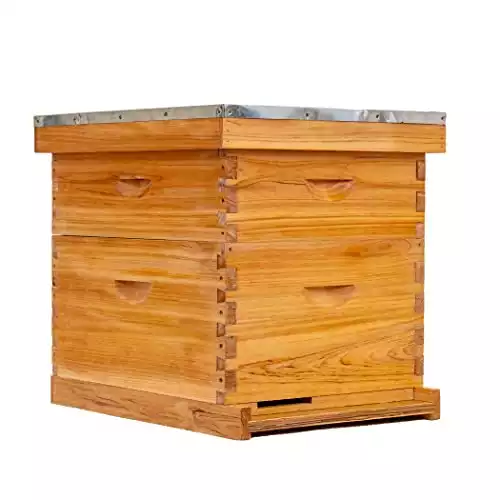If you have considered starting beekeeping and have done your research well, you would have come across the words “Langstroth hives.”
But what exactly is a Langstroth hive, and why does one commonly come across it in modern beekeeping?
In this blog post, we’ll explore how a Langstroth hive came about and its fundamental role in beekeeping and honey production.
From its inception to its widespread use, we’ll learn the history and the ingenious design that has made it a preferred choice for most beekeepers worldwide.
What is a Langstroth Hive?

A Langstroth hive is one of the several types of beehives that many beekeepers use for its effectiveness and convenience.
It is the most common beehive preferred by both newbies and professionals.
History of the Langstroth Hive
The Langstroth Hive was invented in the mid-19th century by Lorenzo Lorraine Langstroth.
In the past, beekeepers housed their honeybees in straw skeps, gums, and even simple wooden box hives with no internal structure.
Before the invention of Langstroth hives, beekeeping was a painstaking and messy process as honey bees would build comb or seal spaces with propolis in a haphazard manner.
But then, in 1851, Reverend Lorenzo Lorraine Langstroth, a native of Philadelphia, made a groundbreaking discovery.
He noticed that when bees had less than 3/8 inch and more than 1/4 inch of space to move around, they would not build comb along that space or seal it off with propolis. This space measurement became known as “bee space.”
Langstroth was inspired to design a more efficient hive after observing the behavior of bees in his own backyard. He realized that these six-legged insects naturally leave a space between their combs for easy movement and access to honey.
This observation led Langstroth to focus on building a hive that mimicked the bees’ natural tendencies.
That same year, Langstroth applied the bee space concept in a newly designed frame that would prevent bees from building honeycombs that attach to the inside of the hive box.
In 1852, a US Patent was issued to Lorenzo Lorraine Langstroth for his hive design.
From then on, Langstroth bee hives gained popularity among beekeepers in the United States and even worldwide.
Over the years, some modifications were made to the original design. Additional features like the inner and top cover, among others, were introduced to provide insulation and help protect the hive from harsh weather conditions and other environmental elements.

Design of the Langstroth Hive
The Langstroth beehive was designed like a rectangular, wooden box (some experimented with using plastic) with removable frames. These hive frames hang inside the hive in a vertical position with a small gap in between them.
The distance between frames provides the bees enough room to move around and build their combs, store honey, and care for their brood.
The fundamental feature of his hives was the use of movable frames inside the wooden boxes.
By allowing the frames to be removed and inspected without disturbing the bees, Langstroth solved the problem of damaging the combs during hive inspections. Beekeepers can also inspect the comb without disturbing our industrious friends too much.
At the same time, beekeepers can easily inspect the insides of a hive and extract honey from the honeycomb without damaging the boxes. This would positively impact the health of the colony as honey bees are not stressed during hive inspections and honey harvesting.

Main Parts and Components
The Langstroth hive has several components, forming its three main sections: the bottom board, the brood chamber, and the honey supers. Each section serves a different purpose in the overall functioning of the hive.
Hive Boxes
One essential component of the Langstroth beehive is the hive body.
Hive bodies or boxes are made of durable wood (commonly pine and cedar wood) and rectangular in shape. These rectangular boxes usually measure 19 inches in length, 16 inches in width, and with a depth of 9 ⅝ inches, and are designed to accommodate 8 or 10 frames, depending on the size of the box.
The hive boxes are designed to be stackable on top of each other, creating the hive’s structure. The number of boxes depends on the size of the colony, as well as the goals of the beekeeper.
These boxes are also interchangeable, making it easier for beekeepers to inspect and manage the hive. By interchanging and moving the hive one after the other, beekeepers are able to monitor the bees’ health with lesser disturbance to the colony.
Ultimately, the hive boxes protect the bees from predators such as mice and ants. It also provides shelter from environmental elements that can cause stress to the bees and regulates the temperature and humidity inside the hive for successful honey production.
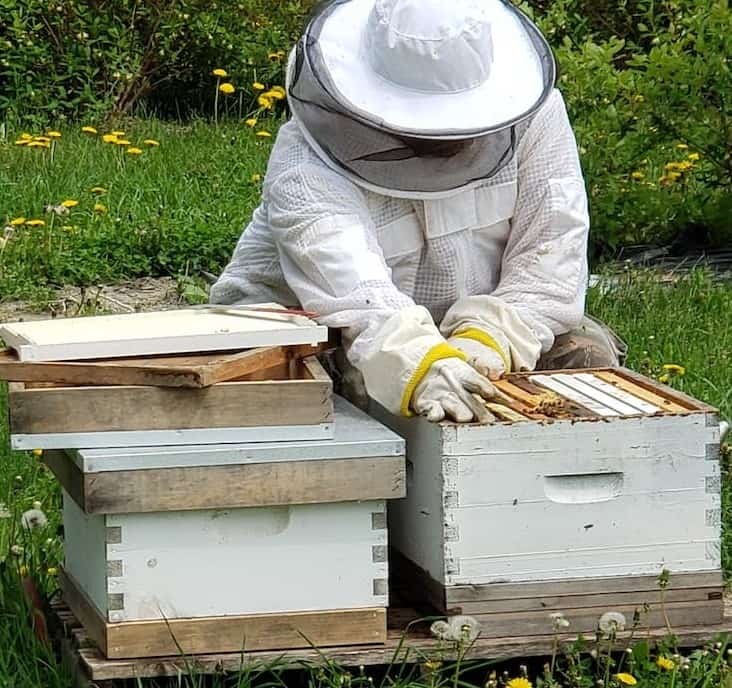
The Brood Chamber
The brood chamber, also known as the lower box or brood box, is the lower section of the hive where the brood is being raised. It is composed of one or more brood boxes stacked on top of each other. A brood box contains frames that may have a foundation or be foundationless.
The brood chamber plays an important role as it is where the queens lay eggs. As soon as she starts to lay eggs, workers act together to raise the new brood.
The brood chamber may be composed of two or more deep hive bodies to provide ample space for the growth of the colony.
Regularly, beekeepers inspect the brood frames to ensure that the queen actively lays eggs and to check for pests and diseases that could affect the health of the brood and the entire colony.
When the combs, brood, and larvae in the boxes in the brood chamber are healthy, beekeepers are assured of a strong population of worker bees. This is important as these workers support so many functions in the hive.
They are in charge of caring for the brood, foraging for nectar and pollen, and honey production.
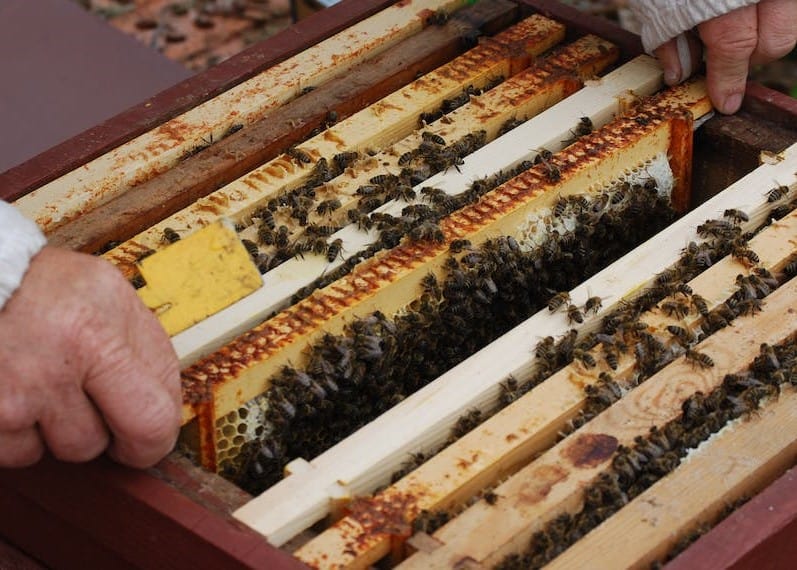
The Honey Supers
Located above the brood chamber, the supers or the upper boxes are where the bees store surplus honey for the beekeeper to harvest. These supers are designed specifically for storing honey separate from the brood nest.
In comparison to the brood boxes, the supers are shallower in depth, typically around a little less than 7 inches.
Depending on their goals, beekeepers add supers to the hive, usually when the honey flow season begins. This gives the bees additional space to store surplus honey.
When it is time to harvest honey, beekeepers carefully remove the frames containing capped honey and replace them with empty frames to encourage the bees to continue producing honey.
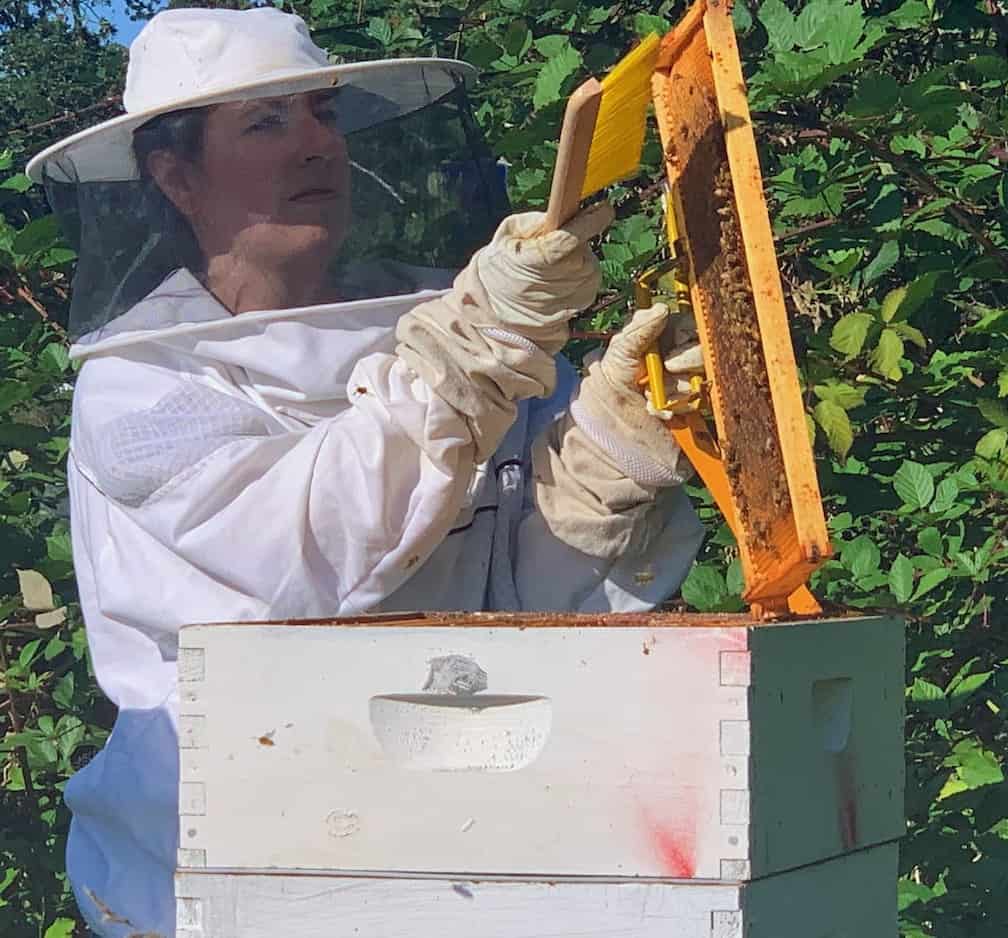
Frames
Frames are an essential component of Langstroth beehives.
For frames with a foundation, the rectangular structure comes with a thin wire or plastic grid foundation attached. Foundationless frames do not have thin wires or plastic grids.
The frames hold the comb and provide structure for the bees to move around. They are positioned vertically inside the hive body.
They also provide a guide for bees to build their honeycomb, acting like a template to build a uniform comb, which is essential for easy inspection. The bees will then build their comb on the frames.
Each frame may be removed individually. This feature is particularly beneficial for beekeepers, enabling them to manage the hive better.
By removing individual frames, one can assess the amount of stored honey, the presence of the brood, and the general condition of the bees.

The Bottom Board
The bottom board is the foundation of the hive. It provides a sturdy foundation for the hive and also helps to keep out predators (along with the hive stand).
To provide the bees with protection and insulation, beehives sit on bottom boards. These foundations can either be solid or screened, depending on the beekeeper’s preferences.
A solid bottom board offers protection from external elements, while a screened bottom board improves ventilation and helps control mites and other parasites.
The hive bodies are surrounded by an outer cover, also known as the telescoping cover. This cover provides protection from the environmental elements, helping in temperature and humidity regulation inside the hive.
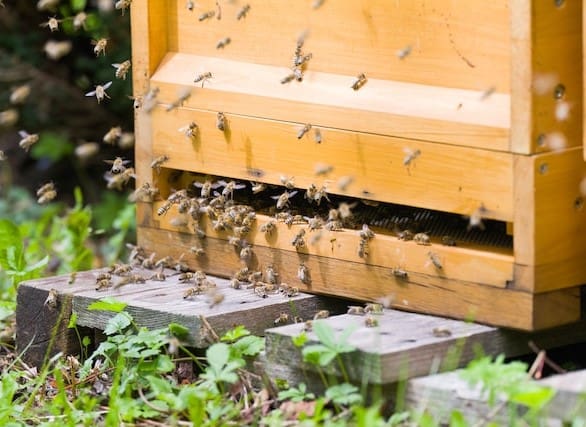
Other Accessories for the Langstroth Hive
Besides the main components presented above, there are other hive essentials that could greatly help with hive management.
Queen Excluder
For one, there is the queen excluder. To separate the honey supers from the brood nest, beekeepers use a queen excluder.
A queen excluder may be made of plastic or metal. These queen excluders are designed with closely spaced metal wires or plastic grids, big enough to allow worker bees to pass through but small enough to prevent the queen from doing the same.
This would restrict the queen from laying eggs in the honey storage, ensuring its purity without brood and larvae.
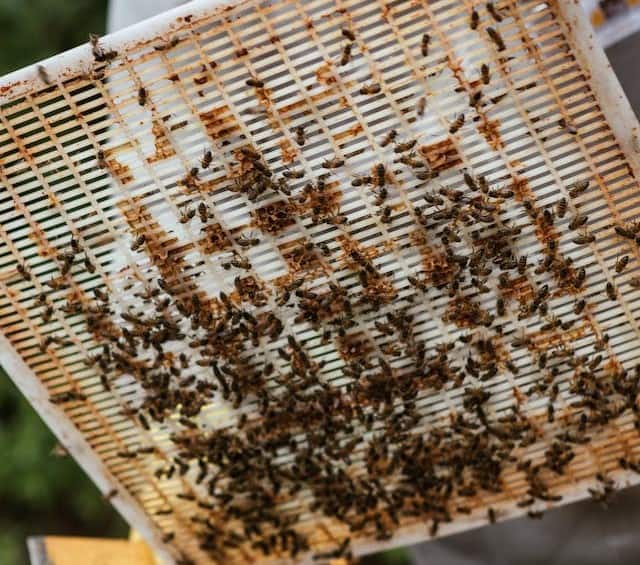
Entrance Reducer
The Langstroth hive also allows beekeepers to add an

This beehive can also be equipped with an upper entrance, an alternative entrance for the bees located near the top of the hive.
This component primarily provides easier access for ingress and egress for the bees during certain seasons or specific conditions. In addition, it improves the ventilation inside the hive.
Best Langstroth Bee Hives
Check out our top picks of the best Langstroth boxes available on Amazon.com.
Our Top Pick
Runner Up
Also Great
Advantages of Using Langstroth Hives
Using a Langstroth hive offers several advantages. Here are the most common benefits of using this type of beehive:
- Removable Frames: One of the most significant advantages of Langstroth hives is the removable individual frames within. These frames allow beekeepers to inspect the hive and perform various tasks without disturbing the entire colony.
- Standardized Design: Langstroth hives have a standardized and modular design, making them easier to source. It is also widely used, giving way to many beekeepers with enough experience to share ideas and pieces of advice.
- Harvesting Honey: Langstroth hives are designed to maximize the production and harvest of raw honey. With their removable frames, one can easily withdraw honeycombs without causing excessive disturbance to the bees.
- Bee Health: The ability to inspect and manage the frames individually contributes to better bee health. Early detection of issues such as disease, pests, or lack of food can help beekeepers take timely action, promoting the well-being of the entire colony.
- Hive Expansion: Langstroth hives can be expanded vertically by adding additional boxes (supers) to the upper section of the hive as the colony grows. This ensures that the hive can accommodate the growing population.
- Commercial Beekeeping: The efficiency in checking honey stores and honey extraction make Langstroth Hives a great option for commercial operations. They allow for easy use of beekeeping accessories, maximizing honey production on a larger scale.

Disadvantages of Using Langstroth Hives
While Langstroth hives offer many advantages, there are also some disadvantages when using this type of hive. Here are the most obvious ones.
- Heavy Lifting: When Langstroth hives are fully loaded with honey-filled frames, they can be quite heavy to lift. This could be challenging during hive inspections and honey extraction, requiring careful handling or assistance in lifting and moving.
- Potential for Overcrowding: While the ability to expand the hive vertically is an advantage, some beekeepers might face challenges managing population growth. Without proper attention, Langstroth hives can become overcrowded. This is one disadvantage to using this equipment, as it could potentially lead to swarming.
- Expense: Compared to other hive types, Langstroth hives can be more expensive to set up initially, especially when purchasing hive boxes and their components and accessories. However, the long-term benefits of using this type of beehive may outweigh the initial financial expenses.
- Assembling and Maintenance: Langstroth hives and their components take time to assemble, especially for hobbyists and those new to beekeeping. Additionally, maintaining and repairing the parts and accessories of the hives may require regular attention.

Final Thoughts
The Langstroth hives remain the top choice for both experienced and beginning beekeepers. It is a dependable and efficient option for keeping honeybee colonies healthy.
Overall, the Langstroth hive promotes natural beekeeping by adhering to bees’ preferences. With this hive type, bees are less stressed, allowing them to be more efficient and produce honey more actively.
Weighing the pros and cons, one can clearly see that the advantages far outweigh the disadvantages of using a Langstroth hive.


